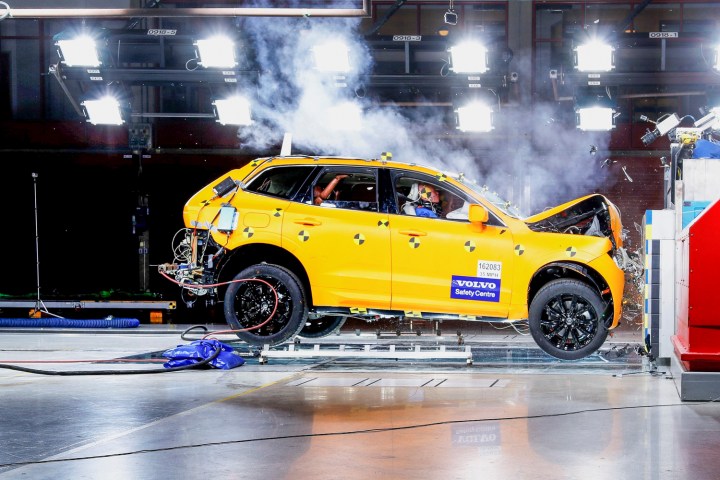
Engineers paid attention to every last detail during the development process
Introduced in Geneva, the second-generation XC60 SUV is a monumentally important part of Volvo’s model offensive. It’s make-or-break; the company can’t survive solely on the bigger 90-series models, and the smaller 40-series cars are largely Euro-centric – at least for the time being. It replaces Volvo’s best-selling car, which is like trying to fill Paul Bunyan’s shoes.
The stakes are high in the mid-size luxury SUV segment, so engineers paid attention to every last detail during the development process. Nothing was left to chance, and the XC60 even has a few surprises up its sleeve. Here are four interesting facts we learned while driving the newest member of the Volvo family in Spain for our XC60 review, and talking to the folks who designed it.
It inaugurates new safety features
Volvo’s reputation for safety is well-known in the automotive industry. Ready to carry the torch, the XC60 inaugurates three new features that will soon be available on the bigger 90-series cars.
The existing City Safety tech has been upgraded. It now includes a function that allows the car to automatically steer clear of an obstacle (such as another car) if it detects a collision is unavoidable, and quickly steer itself back in its original lane. Additionally, the blind spot information now senses when a rear-end collision is imminent because the car is swaying out of its lane, and steers the car back in its lane to avoid the impact. Similar technology scopes out the road ahead to prevent dangerous front-end collisions caused when a car inadvertently drifts out of its lane.
Interior designers took the trim in a new direction – literally
Look at many luxury cars and you’ll notice the wood trim’s grain runs from one side of the dashboard to the other; we’ll call it east-west. In the XC60, it runs north-south, so in the direction of travel. Getting it right was more difficult than it sounds.
Engineers had to figure out how to fuse pieces of wood together and make them look like they form a single unit. It’s not just a straight line, either; that would be too easy. It wraps around the air vent on the driver’s side, runs below the instrument cluster, underlines the nine-inch touch screen on the center console, comes back up, and goes around the passenger’s air vent.
The Swedish flag on the dash isn’t just there for looks
Following the piece of aluminum trim on the dashboard takes your eye to a discreet Swedish flag. It’s located right below the air vent on the right side of the dashboard. It looks cool, but it wasn’t placed there for purely patriotic reasons.
A Volvo spokesperson explained the flag is what made it possible for the company to use a single piece of trim without joints or cut points. “It provides flexibility for tolerances when manufacturing and installing the metal component,” the spokesperson told us. It also looks neat – and it would have been a lot more difficult to achieve if Volvo was based in a country with a more intricate-looking flag, like Australia.
It’s one of the most powerful cars in its class
You have three options to choose from if you want a mid-size SUV with 400 horsepower or more. They’re built by Porsche, Mercedes-AMG, and Volvo, respectively.
The XC60 will receive the XC90’s acclaimed gasoline-electric plug-in hybrid drivetrain before the end of the year. Called T8 in Volvo-speak, it’s built around a 2.0-liter four-cylinder engine that’s both turbocharged and supercharged, and an electric motor mounted right over the rear axle.
The XC60 boasts an upgraded, 10.4-kWh battery pack, though Volvo hasn’t announced its electric-only range yet. However, we know the 400-horsepower drivetrain propels the SUV from 0 to 60 mph in just 4.9 seconds. That’s on par with a Volkswagen Golf R, making the gas-electric XC60 a wolf in sheep’s clothing. Or, since it’s Swedish, how about a wolf in moose’s clothing?







